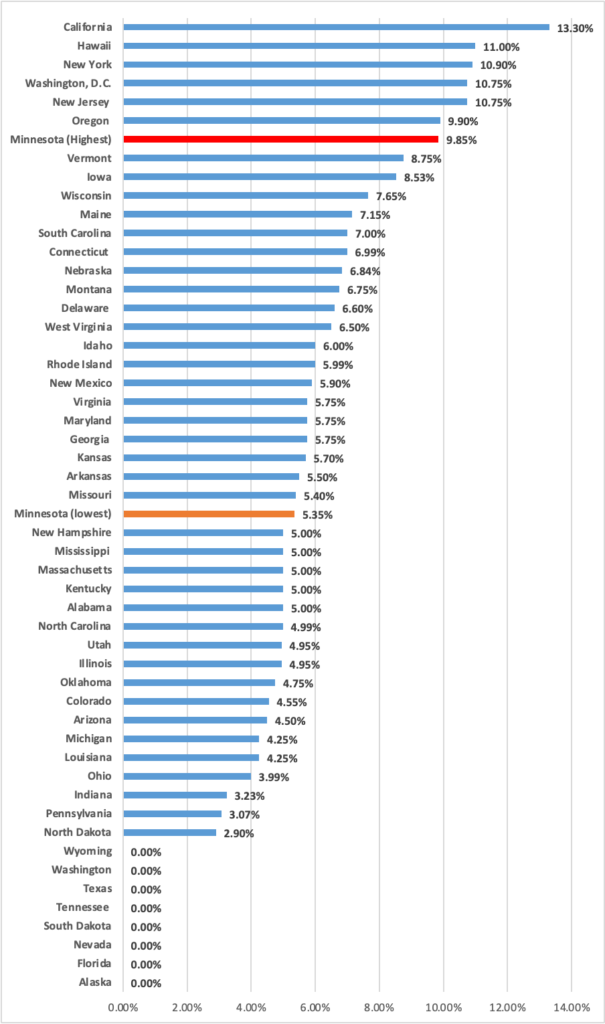To help small businesses, cut taxes
Definitions of a small business vary, sometimes depending on the type of industry. But generally, firm size is defined by the amount of revenue or level of employment. In some industries, a small business can be defined as one employing 250 employees or less. In other industries that number is higher.
Regardless of the definition, however, one thing is true. Small businesses are certainly important to both the Minnesota and U.S. economies. According to the Small Business Association’s profile for states — which defined a small business as any firm with 500 or fewer employees — in 2021, Minnesota had over 500,000 small businesses. These businesses made up over 99 percent of employees and employed 46.2 percent of all Minnesota employees.
Some research has also found that small businesses — which usually tend to be new and young — are responsible for the majority of new job creation.
So Governor Walz is right, small businesses do drive our economy. However, if he really wants to deliver, he needs to do more than just prevent tax increases or provide financial support.
The Walz administration should cut taxes
Businesses are taxed heavily in Minnesota. According to the Tax Foundation, this year, Minnesota’s corporate income tax rate was the third highest top rate in the nation — tied with Iowa’s. However, New Jersey’s top rate kicks in at incomes over $1 million, while Minnesota’s 9.8 rate applies to all businesses. So, for businesses with incomes less than $1 million, Minnesota has the second highest corporate income tax rate in the country.
And given that Pennslyvania has passed a law to cut its corporate tax beginning next year, Minnesota is poised to have the highest corporate tax rate for incomes less than $1 million come January 1st.
Figure: Top rate of state corporate income tax rate, 2022

Minnesotans don’t get relief on personal income taxes either. In 2022, Minnesota’s top individual income rate was the seventh highest in the country. Even the State’s lowest rate is higher than the top rate in a lot of states.

To say the least, preventing tax increases is not enough. With numerous other states enacting significant reforms to cut their taxes, Minnesota is falling behind and won’t be able to compete with other states in creating businesses or attracting investments into the state. Not that our state needs any more help to underperform considering our low rates of business creation.
To deliver for small businesses, the Walz administration should cut taxes which continue to weigh down on our economy.